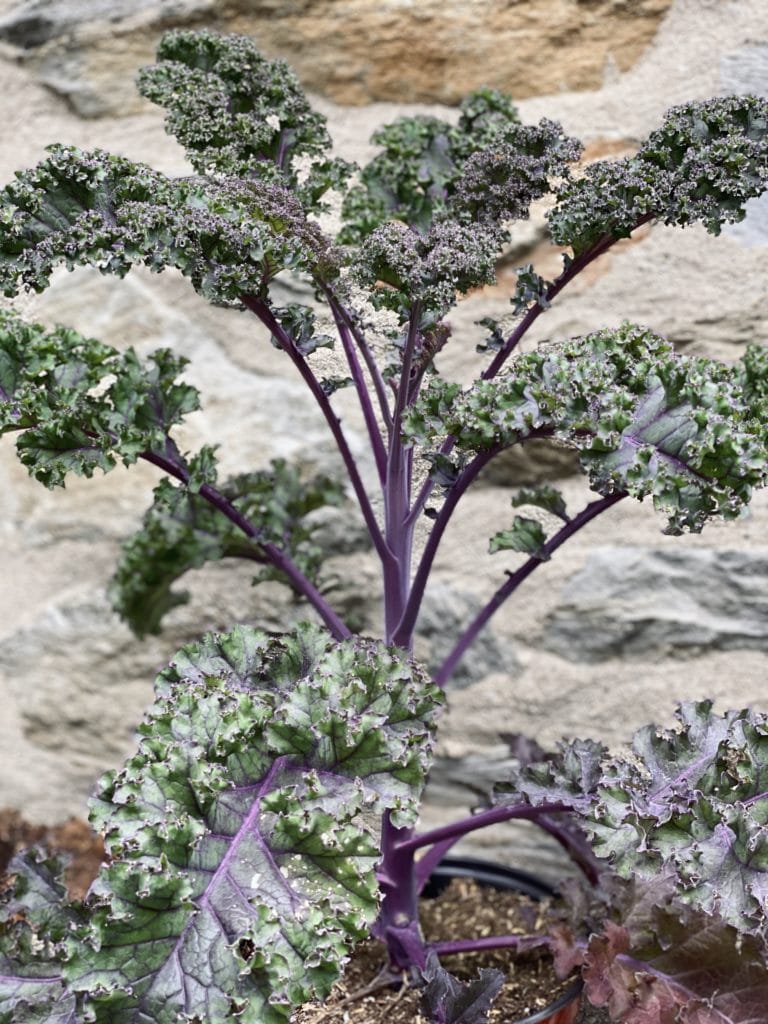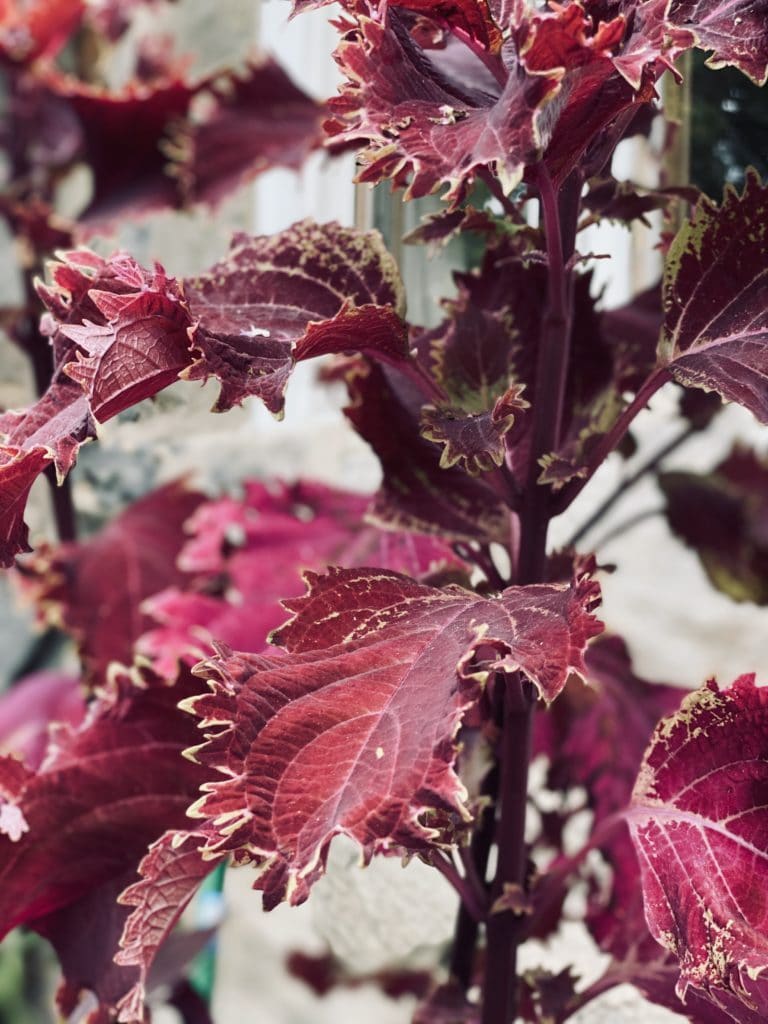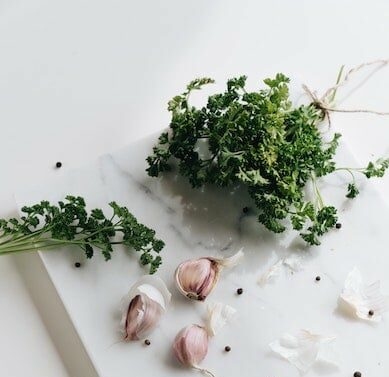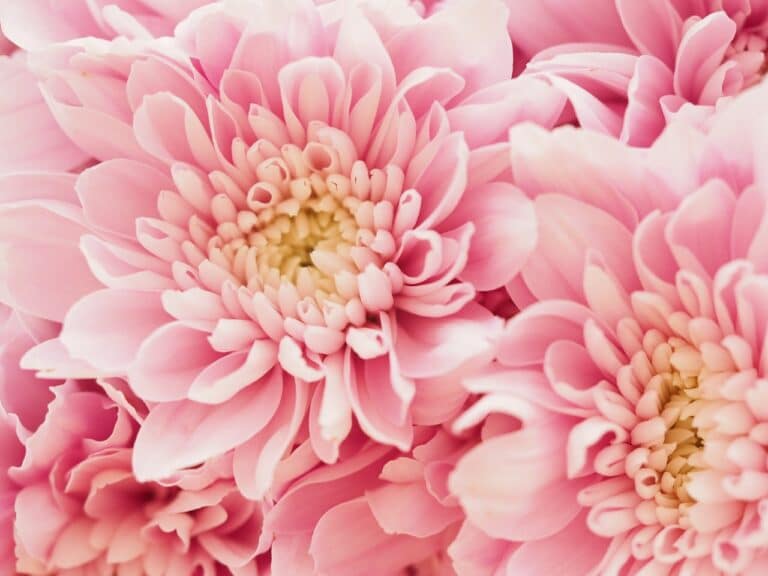
The Best Plants for Fall Planting
- filed under: Floral Journal, The Stylish Life
Sometimes I wonder when the heat and oppressive humidity of a Northeast US summer will end. And then, all of a sudden, I need a blanket to sleep and the summer plants that kept me company through the heat are giving their last show.
Even though that sounds high-drama and melancholy… the feelings of revamping the exterior spaces start to well-up. Then, I’m out the door like a rocket searching for fall plants.
To say I am a tad obsessed with autumn may be an understatement. But most likely you share in the same love since you are here!
One thing to note with fall plantings, its not a single shot. You have different times to plant different items. Colder weather is ideal for some while warmer temps prevail for others. All of this is noted below for your reference.
So now my dear LB readers, I present to you my favorite plants for fall planting.
Marigolds

The classic marigold gets a bad wrap for being so common, but it’s an unexpected addition to fall plantings. Perfect for late summer to bridge the transitional period.
When planting this annual, think en masse, not just singles or doubles– you want fullness. They make their best statement in thoughtful gatherings. In a container plant three together for an eye-catching design. They mix well with coleus’ rich hues and velvety finish.
Ideal for the edge of flower beds and naturally become welcome additions to walkway borders.
Notes
- Best Time to Plant
- warmer temps are preferred
- Late summer to early fall and later depending on your geography
- North and Temperate regions: late august early September for your fall beds
- Southern to Sub-Tropical: Late September to October
- Ideal Colors for Fall
- Deep russet
- Butterscotch with variegated with russet
- Application
- Best in planted in groups of minimally 3-5 or en masse along walkways or beds
- In containers in groups as a short mounded plant and used in front or sides
- Care
- Full sun is recommended
- Water thoroughly but do not let them sit in water
- Once planted pinch back tips to encourage a fuller plant
Kale
Kale, Cabbage, Brassica; all names referring to this ornamental annual beauty.
This is one of my favorites. When implementing a design, I look for a “weighty” focal point and kale brings this to outdoor fall planting.
In containers, place them in threes surrounding breezy grasses or slender twigs. Use singly to the right of a container design to balance and ground the visual and cased Ivy, Creeping Jenny or nestle into end-of-season potato vine (ideally way before the first frost; frost is not potato vine friendly). Add anything from Harvest Mums to delicate Wheat Celosia or Galardia depending on your color scheme.
In beds, they look particularly best when used in a curbed linear form for large areas to create rhythm. In smaller beds, single or triple planting is best.
I love the simplicity of just one massive plant framed by delicate vines of Ivy in one gorgeous garden urn or container for an outdoor table.
Notes
- Best Time to Plant
- Early fall and later depending on your geography. If it is too hot they will bolt.
- North and Temperate regions: late September early October. Earlier is ok but you will be replacing them by November
- Southern to Sub-Tropical: Early November is ideal
- Colors
- Green and white; purple and green; plum and green; smokey plum; purple and plum.
- Application
- Singles or triples in beds
- Long linear rows (curved or straight) in large beds
- Care
- Prefer moist soil, but is tolerant if you forget
- Outer leaves will brown first, very normal.
- As outer leaves fade the inner plant expands
Flamingo Feather Celosia
Flamingo Feather Celosia is a beautiful “tender perennial,” that returns each year in zones 9 and 10. It is considered an annual in all other zones. But its height and unusual fuzzy flower make it an ideal addition to mixed beds where subtle height and movement is needed. This is full-sun loving pant (6 hours minimum) and will not do well in shady areas. Shade produces a “leggy” floppy plant which is, of course, undesirable. Daily watering is needed to establish the plant. Once it’s established, it becomes very drought tolerant.
When designing your outdoor setting, these beauties look fantastic with kale. The fuzzy texture is a natural complement to kale’s smooth leafy texture. They do well with a more simplistic approach to texture. But on the side of color, they are gorgeous when used sharply. Contrasting colors of bright green, bronze, and even white create an eye-catching display. This is the plant to think outside of the box when designing your setting.
Notes
- Best Time to Plant
- Summer to late summer depending on your geography. They do well in heat and become drought tolerant.
- North and Temperate regions: Late August to Early to mid- September is ideal as frost is a foe.
- Southern to Sub-Tropical: Late August and through fall as frost is not likely in your region so early.
- Colors
- Pale pink or burgundy, both fading as they grow to white
- Application
- Singles or in drifts
- Care
- Water well in the first week or so until established and then they become drought tolerant
- Trim spent blooms and unsightly leaves
- Minimum of 6 hours a day of sun.
Red Fountain Grass
Notes
- Best Time to Plant
- Late Sumer to Early Fall
- Color
- Beautiful red foliage with feathery plumes that turn from plum to tan
- Application
- Perfect containers when used for height and movement
- Frame walkways and doorways
- Perfect for planting bed height or novelty plant alone near garden structures
- Care
- Water well until the plant is established. Then only regular watering maintenance.
Heuchera
Heuchera is not typically used only for fall. The shade-loving perennial plant begins its season in spring and lasts through late fall. Why they make the list is their colors. They range from plum to acid green to bronze and many variegated varieties. They make fantastic container accompaniments to items like grasses, mums, and gaillardia. Before the frost sets, remove them and plant in a shady garden area to provide color for years to come. They send up delicate slender stems with tiny bell-shaped blooms in summer.
One of my favorite applications is using them in their nursery container and accenting collections of gourds or pumpkins with their foliage. Talk about easy natural decorations. Another favorite is planting a container with only warm tone heucheras with red grasses. The restrained combination is very elegant.
If you have the desire to experience heuchera in your setting, this is the ideal way to get acquainted.
Notes
- Best Time to Plant
- For bedding planting summer to prepare fall. But anytime during the fall season is ideal
- Ideal Colors for Fall
- Bronze/green, plum, yellow/bronze, rose/plum, pale green/green
- Application
- Perfect for interesting texture in garden beds, containers, or fall decor
- Care
- Regular watering, can be transplanted to a bed for perennial use end of season, prior to frost.
Coleus
A show stopping plant whose foliage is the center of attention. These colorfully striking powerhouse plants are perfect to plant in summer and use their maturity for early fall planting. This year I planted the above pictured coleus in containers with the idea that they would pair well with my intended fall design. The red foliage is a perfect backdrop to orange pumpkins. My point is their season is lengthy. Thoughtful planting will yield easy work at seasons change.
Coleus are often planted early summer. But late summer at most garden centers you’ll find them new and ready for the transitional period. Because of their deep hued and high-yield colorful foliage, they make great accompaniments to the fading summer plants and the new autumn arrivals.
Color availability is endless (so to speak). Variegated leaves can range in color depth depending on light. Their colors are found in the red and green color wheels taking in burgundy and plum to deep emeralds, black and acid green tones.
Coleus do not like to be dry and will tell you with their leaves pointing straight at the ground they require water. Other than moderately moist soil they need very little care. Good to note that a hard frost will take them out immediate, so be prepared for late fall season adjustments in the mid-Atlantic to northern regions.
Notes
- Best Time to Plant
- Early or Late Summer around Labor Day in the mid-Atlantic and north
- Later in September further south
- Ideal Colors for Fall
- That is your design call dependent on your plan. Web search the colors and you’ll see what is meant.
- Application
- Great as a medium height plant or back row plant for narrow beds.
- Perfect in planters for their tall, dense and deep foliage for interest.
- Care
- Moderate watering in fall
- Late summer heat will require more water.
Creeping Jenny
The immature boy that lives in me wants to laugh every time I hear/see/say the name. “What is she up to know? Jenny, stop creeping, girl; we had enough.” is what is running through my mind…. (I’m not here for stuffiness. I leave that to others.) In all seriousness (maturity taking over now), this vine is absolutely perfect if you enjoy sharp colors. Think of this: bronze mums with the heuchera pictured above the bright acid green Creeping Jenny and large green and and blue gourds. They do well with coleus since they share a similar color line.
This pretty lady wants to drape and create softness on the containers she graces. Yes, this is meant for containers. For me, ground cover is not a needed fall item. Jenny is found in summer and will grow at least two feet long and 10 inches wide. So it makes a great fall intended use plant when added in summer. But you can certainly enjoy this brightly colored vine when freshly planted in fall.
This is one of the plants I secured for my plantings. Be sure to look for an upcoming post on the garden revamp for autumn.
Notes
- Best Time to Plant
- Early or Late Summer and very early fall
- Colors
- As shown in acid green
- Application
- Vine plant for containers adding softness and draped greenery
- Plant at container’s edge
- Care
- moderate watering after well established.
Pansies
A collection of dainty faces greet you as you pass these classic plants of moderate to colder temp regions.
Pansies are a cool/cold weather-loving plant. Look forward to adding these beauties in late October early November as your container plants begin to fade and when daily temps fall to 50 degrees. They will even endure a sprinkle of snow and still remain happy as ever. Ideally they welcome Thanksgiving with their russet and yellow to orange varieties. Great to mix with your miniature gourds for window box displays. A favorite of mine is using twigs of grapevine balls with pansies and ivy for late fall containers.
Relatively easy to care for needing moderate watering and occasional dead-head maintenance.
What a great way to end a growing season with absolute charm and joy only created by the faces of flowers that can spark joy.
Notes
- Best Time to Plant
- Late fall when temps are in 50’s
- Ideal Colors for Fall
- Variegated russet, yellow, orange
- Application
- Containers and window boxes
- Care
- Moderate water and occasional dead-head maintenance.
I hope you will try something new this year by adding beautiful plants to your outdoor environment.
With love and style,
Petah
SHARE THIS POST
better known as “Petah”
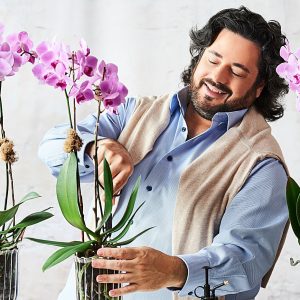

Petah’s Carefully Curated Collection of Beautiful Items for your home, yourself or to give.

How to Host a Beautiful Dinner Party
ELEVATES YOUR ENTERTAINING
A complimentary instructional guide written by Petah using his years of event knowledge, designer know-how, planning skills and flair for perfection.
Reserve your Spot on My List
Living Beautifully Just For you
Receive New Seasonal & Entertaining Guides automatically. And… receive 10% off your first purchase. *exclusions apply
Become An LB Insider
Elevate your style
Want to know insider designer knowledge? Become an LB ISIDER and receive complimentary seasonal look-books, designer insider videos and entertaining guides sent right to you.
To join, click below

How to Host A Beautiful Dinner Party
Petah’s guide to Entertaining Beautifully
A fabulous guide that covers ideal preparations, example menus, table setting and more.
Terms & Privacy Policy | Disclaimer
DESIGN BY DAVEY & KRISTA




